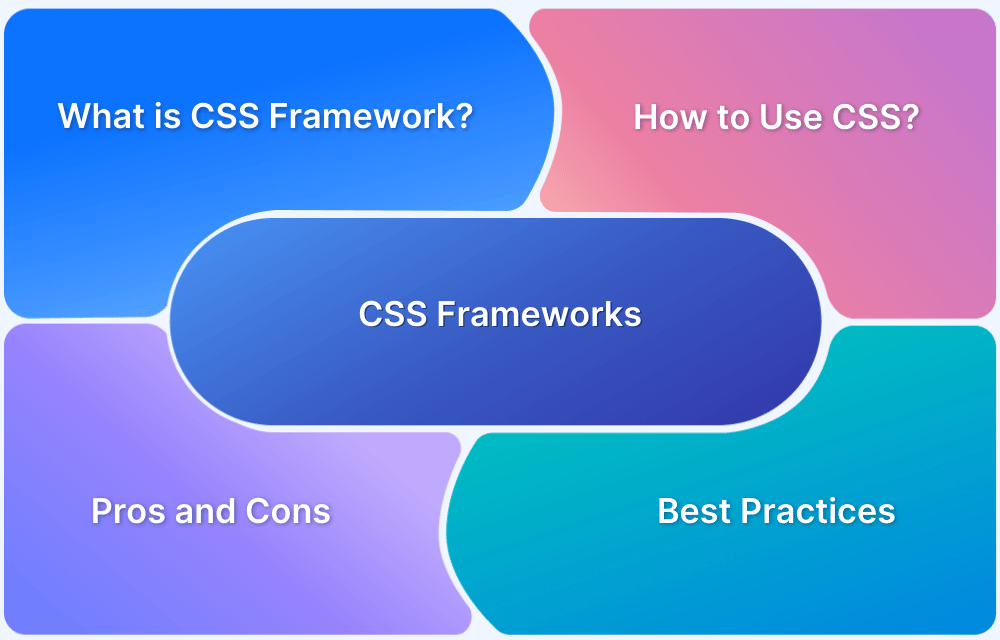Blitz News Digest
Stay updated with the latest trends and insights.
Why Your Next Project Needs a CSS Framework and How to Choose One
Unlock the secret to stunning designs! Discover why a CSS framework is essential for your next project and how to choose the perfect one.
Top 5 Benefits of Using a CSS Framework for Your Next Project
When it comes to web development, utilizing a CSS framework can significantly enhance your workflow. Firstly, frameworks provide a set of pre-built styles and components that save time and effort, allowing you to focus on the content and functionality of your project instead of repeatedly writing custom CSS. This increase in productivity means that developers can deliver projects more quickly, giving them a competitive edge in the fast-paced tech industry. Additionally, many CSS frameworks come with built-in support for responsive design, ensuring that your website looks great on all devices without requiring extensive media queries.
Another advantage of using a CSS framework is the consistency it brings to your project. With a standardized set of classes and components, you ensure that your design adheres to a cohesive theme across all pages. This not only enhances user experience but also helps in maintaining a professional appearance. Furthermore, frameworks often include accessibility features, which are essential for reaching a wider audience. In summary, adopting a CSS framework can lead to faster development, a consistent design, and improved accessibility, making it an invaluable asset for your next web development project.

Essential Features to Look for When Choosing a CSS Framework
When choosing a CSS framework, it's crucial to consider the essential features that will enhance your web development process. First, look for a framework that provides responsive design. This feature ensures that your website adapts seamlessly to various screen sizes and devices, offering a consistent user experience. Additionally, a robust grid system is vital; it helps structure your layout and maintain alignment across different sections of your site. Many frameworks come with predefined classes for grid layouts, simplifying the process of creating responsive designs.
Another important feature to evaluate is the customizability of the CSS framework. A flexible framework allows you to modify its components to align with your branding and style without compromising performance. Furthermore, consider the available documentation and community support. Comprehensive documentation assists developers in implementing the framework efficiently, while an active community can provide valuable resources and troubleshooting help. Finally, assess the framework's performance and compatibility with modern web technologies to ensure longevity and versatility in your projects.
CSS Framework Showdown: Which One is Right for Your Project?
When embarking on a new web development project, choosing the right CSS framework is crucial for achieving a polished and efficient outcome. CSS frameworks simplify the development process by providing pre-designed components and responsive grid systems. Popular frameworks like Bootstrap, Foundation, and Bulma each offer unique features that cater to different project needs. For instance, Bootstrap is renowned for its extensive documentation and robust components, making it ideal for beginners and rapid prototyping. On the other hand, frameworks like Foundation offer more flexibility and customization options, which can be a boon for experienced developers looking to create highly tailored designs.
Before deciding which CSS framework to adopt, it’s essential to evaluate your project requirements. Consider factors such as project size, the need for responsiveness, and your team's familiarity with the framework. A well-defined list of priorities will help you narrow down your choices. Frameworks typically excel in speed and efficiency, but differences exist in their learning curves and community support. By taking the time to analyze these aspects, you can select a framework that aligns perfectly with your project goals, ultimately leading to a more seamless development process and a superior user experience.